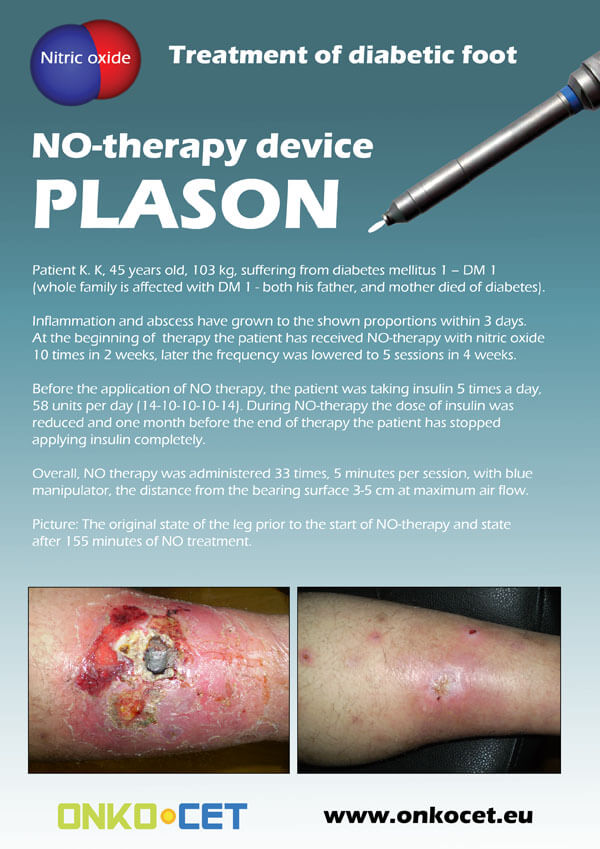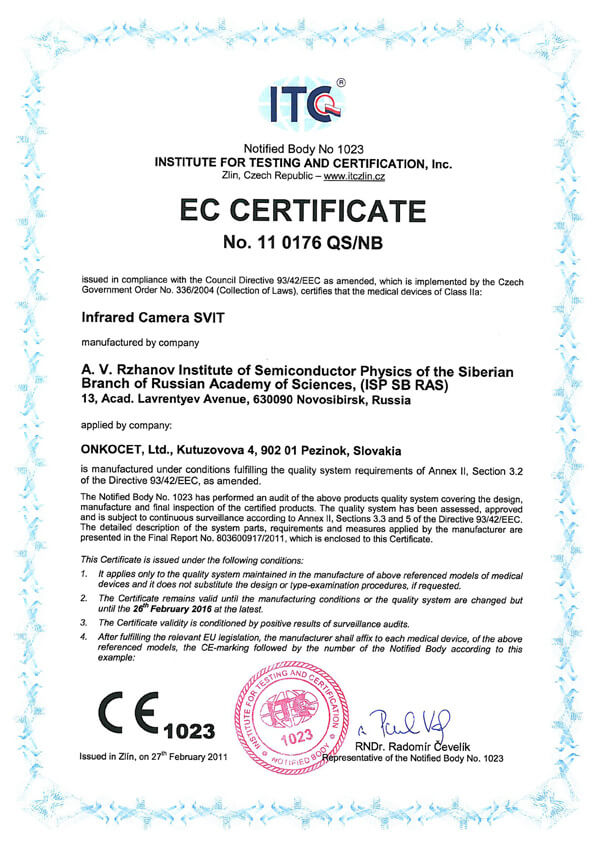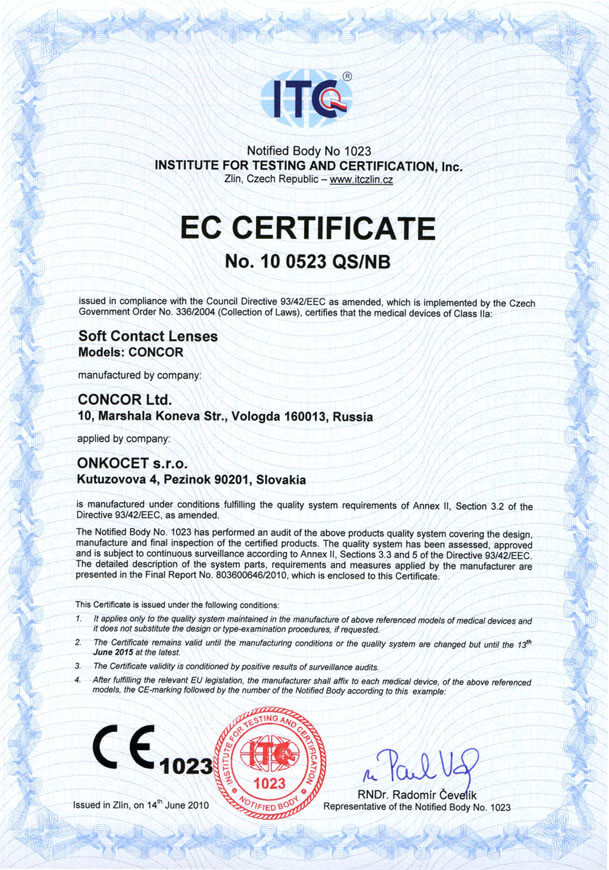Medical devices
search
news

The PDF with the short report with pictures from the therapy of a diabetic foot can be viewed or downloaded here.
The pictures from the treatment of unhealing wounds an be found here:
http://www.onkocet.eu/en/produkty-detail/220/1/
The pictures from the treatment of unhealing wounds an be found here:
http://www.onkocet.eu/en/produkty-detail/293/1/
ONKOCET Ltd. has exhibited the devices from its portfolio on the MEDTEC UK exhibition in Birmingham, April 2011 through our partner Medical & Partners.

 The ONKOCET company has successfully reached the certification of yet another medical device, Infrared Camera SVIT. The Certificate can be found here. The videos from the device operation can be found here.
The ONKOCET company has successfully reached the certification of yet another medical device, Infrared Camera SVIT. The Certificate can be found here. The videos from the device operation can be found here. Our device, the non-invasive blood analyzer AMP has won the Golden Incheba prize at a medical exhibition SLOVMEDICA - NON-HANDICAP 2010. A big thank you goes to the organizers of the exhibition for acknowledging the quality of our device and to the exhibitor, the Medical & Partners company, for introduction of the AMP device to the medical public again.
Our device, the non-invasive blood analyzer AMP has won the Golden Incheba prize at a medical exhibition SLOVMEDICA - NON-HANDICAP 2010. A big thank you goes to the organizers of the exhibition for acknowledging the quality of our device and to the exhibitor, the Medical & Partners company, for introduction of the AMP device to the medical public again.We are pleased to inform our business partners, that our company has succesfully finished the certification process of Concor Soft Contact Lenses.
 You can find the certificate here.
You can find the certificate here.More information on Concor Soft Contact Lenses go to section Medical preparations/Concor soft contact lenses, or follow this link.
 Our company has finished the certification process for another medical device, computerized spirometer MAS-1K with oximeter. You can find the device certificate here.
Our company has finished the certification process for another medical device, computerized spirometer MAS-1K with oximeter. You can find the device certificate here..jpg) Since May 2010 there is a new version of AMP device available.
Since May 2010 there is a new version of AMP device available.Follow this link if you want to see the pictures and specifications of the device.
http://www.onkocet.eu/en/produkty-detail/293/1/
 Dear partners,
Dear partners, In October 2009 we have received CE certificate for another device from our portfolio, NO therapeutical device PLASON. You can find more information about this revolutionary device, used for healing of unhealing wounds, diabetic foot, or for cosmetical purposes, at our webpage, section "Medical devices" -> PLASON-NO Therapy.
.gif)
Best regards
Team of ONKOCET Ltd. company
Heat Transfer and the Human Body
HEAT TRANSFER AND THE HUMAN BODY
Humans, and animals in general, are usually in a thermal steady state with respect to their surroundings. In particular, endotherms seek to control their body temperatures. Heat generated by metabolic processes is lost to the environment though several mechanisms: radiation, conduction, convection, and evaporation. Unless the organism has more heat than can be eliminated by radiation and convection, evaporation (through perspiration) is not required and conduction is negligible.
Convective thermal flux
The cooling of human body through convection mechanism we cam determine using thermal flux equation

where:
Q/A is the thermal flux (W/m2),
L is the characteristic length of the body,
k is the thermal conductivity of the fluid,
?T is the temperature difference between the body and the surrounding fluid
?T = Tskin – Tambient.
Nu is Nusselt number can be found by computing the Rayleigh number.

Ra ?Rayleigh number Ra = (?/??)g?TH3 Human body: Ra ~ 108
The relationship between Nu and Ra is empirical.
Radiation
Human body radiation rate is determined by the Stefan-Boltzmann Law,
![]()
where:
T0 is the ambient absolute temperature,
? is the emissivity,
? is the Stefan-Boltzmann constant.
For skin or clothing, emissivity is near unity. This approximation is valid when ?T is small compared to the ambient temperature, T0.
Comparison of convective and radiative rates
The ratio of convective to radiative transfer is only weakly dependent on temperature difference:

Hence, the assumed value for ?T of 10°C is not critical to the comparison of the relative importance of convection and radiation. The convective heat loss rate is about half the radiative rate.
Convection is an important mechanism in cooling the human body. Under room conditions, convection accounts for about 1/3 the thermal loss of the human body in cool, radiation assumes a minor role in human thermal balance.
Heat balance (thermal equilibrium) is the balance between the rate of heat production and the rate of heat loss. The rate at which heat is produced depends primarily on our metabolic rate.


